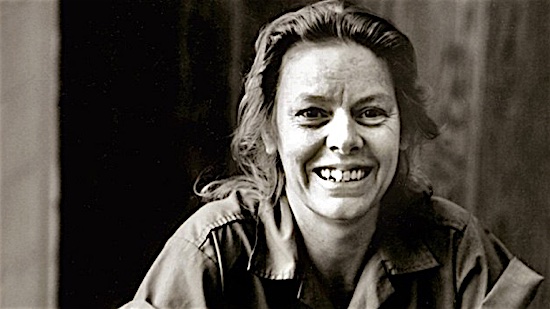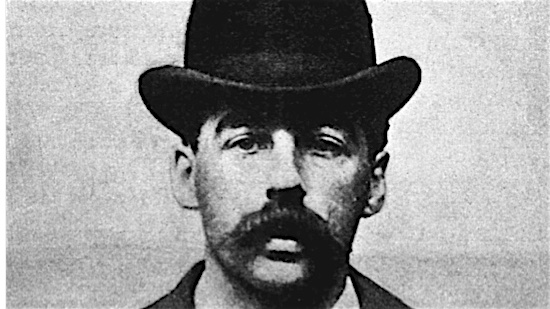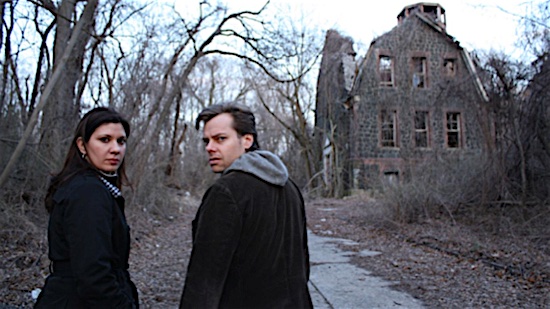
America didn’t invent serial killers—the United States can point to England’s Jack the Ripper the way Louisiana points to Mississippi’s obesity rate—but it sure seems to have had more than its share. By sheer coincidence, all six of these documentaries involve an American perpetrator.
1. Aileen Wuornos: The Selling of a Serial Killer and Aileen: Life and Death of a Serial Killer (1992, 2003)

Though not for the faint of heart, Nick Broomfield’s two studies of famed serial killer Aileen Wuornos combined provide one of the most intimate, interesting portraits of a killer ever committed to film. Perhaps an heir of sorts to In Cold Blood, the two Aileen films together don’t attempt to argue for her innocence, but rather to get to the bottom of who she is, and what went wrong in her life (and later, her defense) to land her in the execution chamber. By itself, the 1992 film is tantalizingly incomplete, mostly following Wuornos’s manipulative “adoptive” mother and bonehead hippie lawyer as they essentially throw her life away. It’s Life and Death of a Serial Killer that really packs a punch. Wuornos, coming across as honest and even likable in the earlier film, has become sadly paranoid and defensive since landing on death row. Broomfield sticks to her side anyway, delving into her horrific childhood and troubled adulthood by talking to friends, neighbors and even her aloof biological mother. Like Capote’s masterpiece before it, Broomfield’s film reminds us that murderers are human, too—maybe even humans who, abused by family and society from an early age, were never given a chance to be anything but doomed. —Maura McAndrew
2. H.H. Holmes: America’s First Serial Killer (2004)

This documentary has all the elements of a classic horror film: grainy, black-and-white archival images; a creepy “murder castle” with secret passages and windowless, soundproof rooms; and a deceptively cultivated killer—think a Victorian Ted Bundy with a significantly higher body count. Many of H.H. Holmes’s victims rented rooms from him during the 1892 World’s Fair in Chicago; others were business associates, casual acquaintances or romantic partners. His motives for killing them were apparently just as diverse, from financial to sadistic, or more likely some combination. John Borowski’s hour-long exploration won Best Horror Documentary at the 2004 Screamfest film festival in L.A. —Allison Gorman
3. Cropsey (2010)

Mixing urban legend, childhood nightmares and true crime, Cropsey explores the unsolved murders of two children and the disappearance of three more on Staten Island in the 1970s. Kids growing up in the borough at the time lived in fear of the bloodthirsty boogeyman Cropsey, and with the arrest and conviction of Andre Rand, a seriously creepy guy who was a janitor at the nearby Willowbrook State School for mentally handicapped children, Staten Islanders found their Cropsey—physical evidence (or lack thereof) be damned. The documentary’s horror-film vibe relies heavily on the cavernous remains of the now-defunct Willowbrook, which turns out to have been a child killer of sorts, too. —Allison Gorman
4. Jeff (2012)

Part documentary, part fictionalization, Jeff blends archival footage of Milwaukee in 1991, when Jeffrey Dahmer was arrested for the murder and dismemberment of 17 young men; interviews with a neighbor, the medical examiner and the lead detective on the case; and a recreation of the life of the killer, portrayed by actor Andrew Swant. Jeff premiered at the SXSW film festival, and was later released as The Jeffrey Dahmer Files, to largely positive reviews. One caveat: even for a documentary about serial killers, this one is hard to stomach. Cannibalism will do that. —Allison Gorman
5. Tales of the Grim Sleeper (2014)

Filmmaker Nick Broomfield should have had plenty of source material to work with here, as the “Grim Sleeper” did his thing for a quarter century before finally being apprehended. But because his victims were doing their thing too—trying to feed their bodies, and often their addictions, by walking the streets of South Central LA—few people noticed or cared when they disappeared. There was no interest from the media at the time, and not much more from law enforcement. Broomfield’s film, made for HBO, says as much about society’s dehumanization of these women as it does about the inhuman acts perpetrated against them. —Allison Gorman